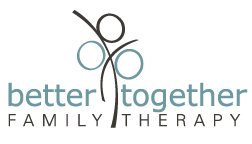The Superpower of Gratitude
Exercises that Promote Reflection and Healing from a Maryland Art Therapist
The expression of gratitude is a powerful gift. Gratitude is not just a thoughtful gesture, it has profound psychological, emotional, and even physical benefits. The root word of gratitude is gratus, its Latin for ‘pleasing, thankful.’ It’s defined as the quality of being thankful; readiness to show appreciation for and to return kindness. The superpower of gratitude refers to the positive impact that expressing thankfulness and appreciation can have on individuals and their overall well-being.
Gratitude Can Heal Us from the Inside Out.
Gratitude can help to retrain your brain and change one’s focus from despair to hope. Neurologically speaking, it cultivates neuroplasticity which is our brain's ability to change, reorganize, or grow neural networks. We can literally change our brain chemistry just by practicing gratitude. How? I’m glad you asked. It regulates our sympathetic nervous system that activates the stress response, “fight, flight, freeze.”
Positive and grateful thoughts release dopamine and serotonin, the two crucial “feel good” neurotransmitters responsible for emotions linked to pleasure and the reward system in our brain. It’s like lotion for your brain, moisturizing and healing the wounded parts. Gratitude balances the stress response through activating the parasympathetic nervous system, “rest and digest,” restoring calm, safety and relaxation.
Gratitude’s superpower immediately enhances our mood, lowers stress and increases our levels of happiness and life satisfaction. Incorporating gratitude into daily life can be as simple as keeping a gratitude journal, expressing thanks to others, or taking a moment to reflect on positive aspects of one's life. The cumulative effects of these practices can contribute to a more fulfilling and meaningful life.
“There is a calmness to a life lived in gratitude, a quiet joy.”
Expressive Art Therapy Exercises to Promote Gratitude, Reflection and Healing
Art Therapy and gratitude provides individuals with a unique and personal way to cultivate a positive mindset, process emotions, and enhance overall well-being. When combined, they can create a holistic approach to self-expression and emotional healing. The exercises in this blog are all about INTENTIONALITY.
Be intentional with practicing and expressing gratitude daily. Intentionality is a mindset, an attitude of purposefulness. Being consciously directed towards filling your cup with gratitude on a daily basis. Set an intention every morning of what values, qualities and strengths you want to cultivate.
Gratitude journaling and art making. Journaling helps to increase self-awareness and reflection. Combining gratitude journaling with art elements can enhance the experience. This integration of words and visual elements can deepen the reflective and expressive aspects of your gratitude practice. Here are some prompts:
If you are saying yes to living intentionally with gratitude and purpose, what does that look like for you? What are you then saying no to? Create an art response of what you welcome into your life and what you will keep out.
Write a letter of gratitude to yourself. Kindness is an act we can all share with ourselves. What do you appreciate about yourself? Create an art response of the feeling of being appreciated, valued, understood and/or accepted.
Catch the good everyday. Be international in catching the good throughout your day. Write down the positive experiences as they happen. Consider ending your day with gratitude by reflecting more deeply on the positive experiences that happened. How did that experience make you feel emotionally? What were the physical sensations it promoted in your body? Engaging in reflective art of positive experiences in your day is another form of self-exploration. It allows you to discover more about yourself, your values and can lead to insights about what truly matters to you.
Mindfulness practices. A body scan is one form of mindfulness meditation which focuses on the physical experience of mindfulness when you bring your full awareness to different areas of your body. A body scan can help to gain awareness, enhance sensations and promote healing. Gratitude can be the focal point during your mindfulness practice.
Art making is a meditative process. Being present in the moment while creating art can enhance the experience and help you connect more deeply with the things you are grateful for. Mindful art-making can also be a way to cope with stress, anxiety, or negative emotions, fostering a positive mindset.
“Gratitude is the intention to count-your-blessings every day, every minute, while avoiding, whenever possible, the belief that you need or deserve different circumstances.”
Incorporating gratitude into daily practices can lead to transformative effects on various aspects of your life. The superpower of gratitude lies in it’s ability to positively impact mental, emotional, and physical well-being, strengthen relationships, and contribute to a more positive and fulfilling life. I encourage you to explore and express gratitude in a manner that resonates with you personally. The act of being intentional and setting aside dedicated time for creative expression and practicing gratitude is a gift you are worthy of giving yourself.


